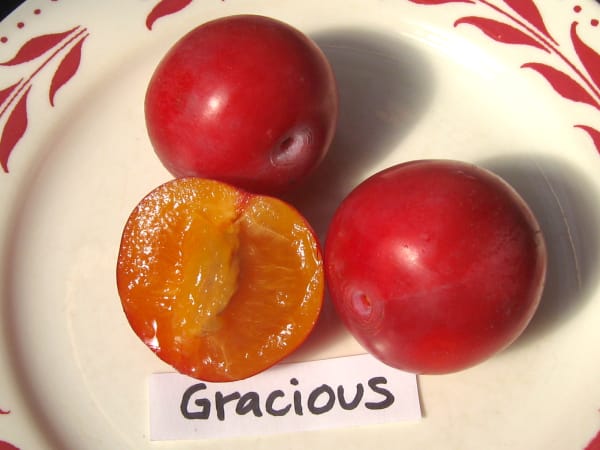Late summer.
Mandan 41-15 [open-pollinated seedling of Emerald (P. sal. Burbank x P. a. Brittlewood) probably x Red Wing (P. sal. Burbank x P. a. mollis Wolf)] Northern Great Plains Field Station, Mandan, ND, 1957.
Oval-to-roundish yellow-orange clingstone fruit with coral-red mottling. Yellow-orange firm juicy sweet flesh.
We received our scionwood many years ago from the late Bob Kurle, one of the early members of the North American Fruit Explorers. Bob passed along his huge collection of plums, including this one, to Fedco.
Upright spreading tree. Z3/4. (3-6' bare-root trees) Limited supply—order early!
Maine Grown. BACK!



